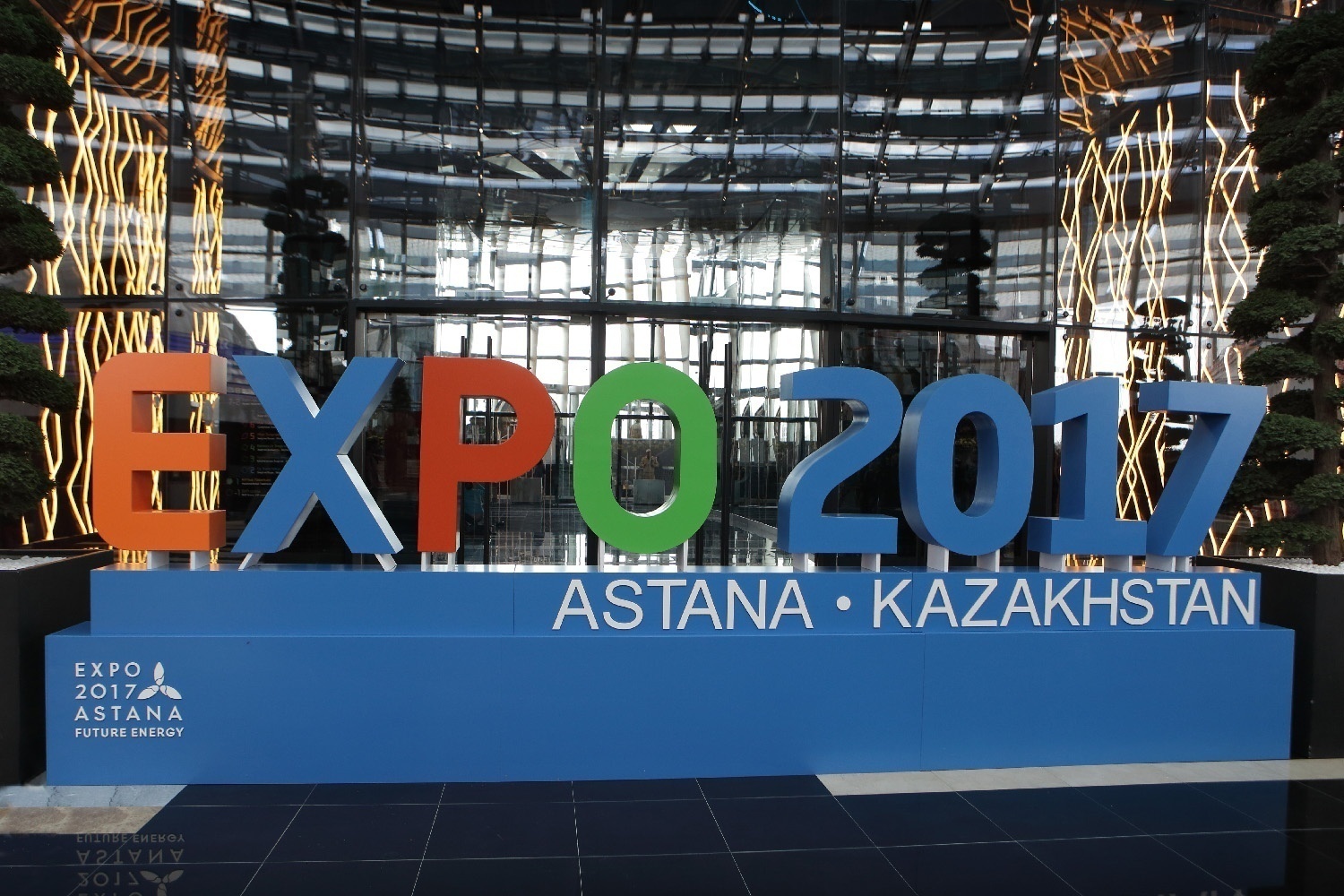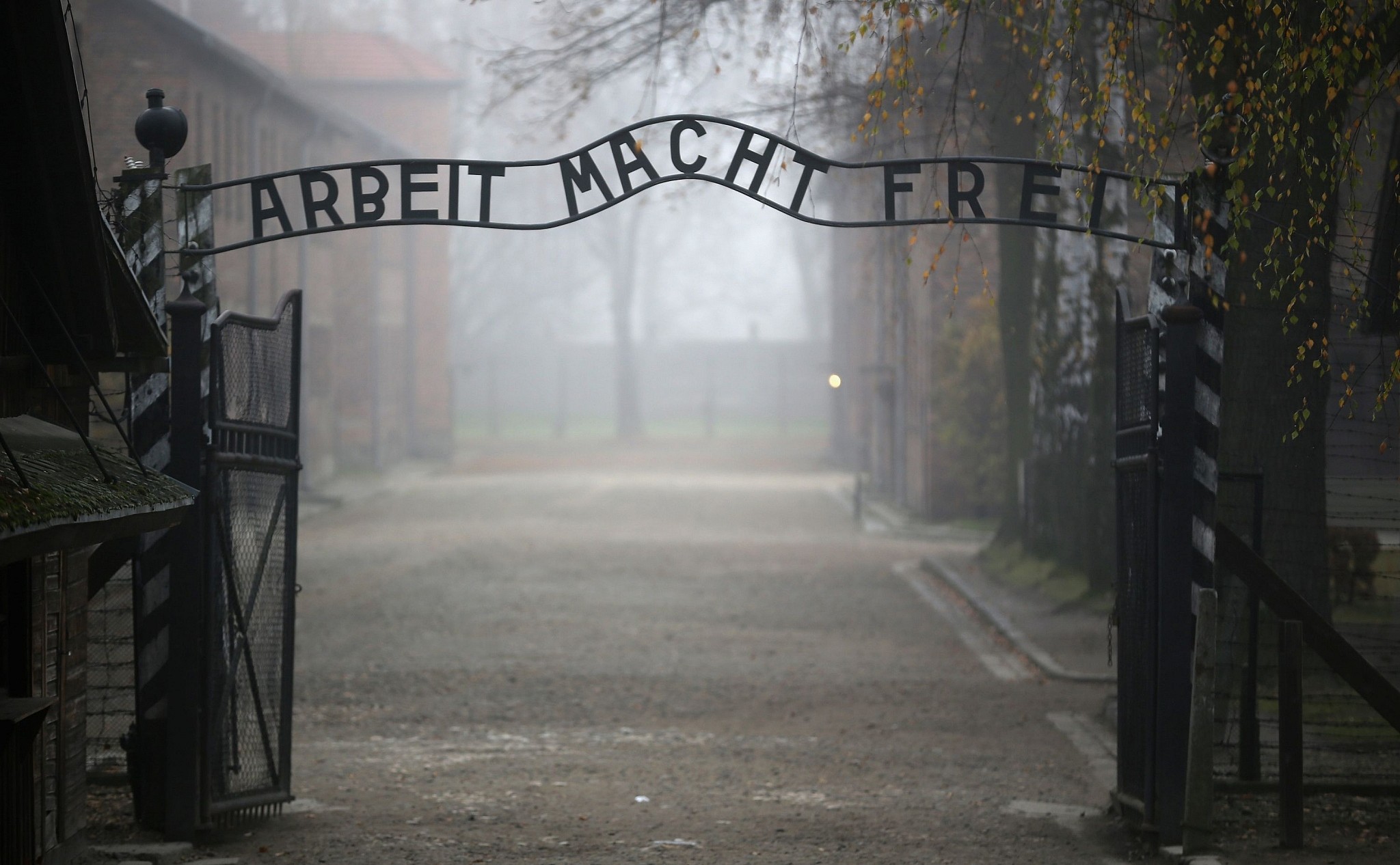
The International Exhibition in Astana has shown the world the Kazakh commitment of being a leader of the future energy revolution. However, EXPO 2017 Astana is not only a project with enthusiastic origins and a successful implementation, but also a project that holds two rich heritages: a tangible, as well as an intangible one.
The International Exhibition was focused on the theme Future Energy: thus, it represented a courageous declaration from a country that- despite the fact that largely made its development possible by a smart usage of its abundant raw materials reserves-is ready and willing to embrace the Paris Agreement and global climate change goals.
The very heart of the 25-hectare exposition’s site, an eight-storey, 80-metre sphere housing the National Pavilion of Kazakhstan and the Museum of Future Energy[1], presented several energy installations and illustrated the principles of Kazakh гостеприимство/gostepriimstvo (hospitality). Then, throughout its seven floors the visitor could get a glimpse of how the future skyline of Astana will look like and could explore the bulk of the green energy technology on which the country aims to rely on in the future.
Solar energy, wind energy, kinetic energy, water energy, space energy and biomass energy constitute indeed necessary elements in the future equation of Kazakhstan’s energy production and supply. The display of the numerous possibilities of supply in the exhibition covers the whole palette of energy in the future and would make any energy geek in the world enthusiast about discovering the functioning of a solar, wind or hydropower plant, on how to get power from biofuels and on how the simple body movement can be transformed into energy.
Now, after the curtain has closed, the Kazakh government and institutions will have to work hard to make of EXPO 2017 more than a short-term traffic bubble for Astana and the country; for that, they need to secure both its tangible and intangible heritage.
The Kazakh Presidency has long anticipated what would be the future of the EXPO site by approving a plan of post-exhibition use of its facilities. After September 2017, maintenance works will be launched in order to shape the three EXPO legacy project: the Astana International Financial Center (AIFC), the International Centre for the development of “green” technologies and investment projects and the international IT start-up hub.[2]
The tangible legacy-or the future usage of the EXPO 2017
The Astana International Financial Center (AIFC) is one of the cutting edges of President Nazarbayev’s “100 Concrete Steps” Plan of the Nation[3], published on May 20, 2015, which aims to implement the five institutional reforms and join the top 30 developed countries by 2050. Inspired by Dubai’s International Financial Centre, the AIFC will indeed operate within a special legal regime based on British Common Law, which regulates the legal relationships between AIFC participants and third parties and aims to develop Kazakhstan’s financial market. When announcing the creation of the center at the Astana Economic Forum in May 2015, President Nazarbayev declared[4] : “Our focus will be based on [introducing] the principles of English law, a preferential tax regime and an independent financial court”.
The AIFC’s objectives are multiple: to open up the Kazakh banking sector, to attract foreign investment by enhancing transparency and best practices and to ease the way of doing business of insurance companies and Islamic finance institutions[5].
If achieved, these goals will concretize the main ambition of the Kazakh leadership: make the Astana International Financial Centre the financial hub in Central Asia by anticipating its neighbours, which are growing increasingly competitive. This way, Astana will cement its position as regional leader and it will be enabled to enter the global financial race, ahead with Dubai and Shanghai, and later with the world leaders.
In addition to that, the construction of the International Centre for the development of “green” technologies and investment projects and of an international IT start-up hub will allow the country not only to set a foot into the international start-up arena, but also to develop new technologies and to share the innovations with other countries by continuously revamping the EXPO spirit.
Both centers will play a very important role in maintaining clean energy a top priority in the national agendas. Now that the EXPO is over, there are other important matters that Kazakh leadership is willing to engage with, such as financial development, the international peace talks on the Syrian conflict and the denuclearization risk, which might shadow the importance of the green transition. Thus, the country needs to focus on the intangible heritage of EXPO 2017 Astana, in order to ensure Kazakhstan’s transition to Future Energy.
The intangible heritage-or how the Future Energy EXPO spirit can be transmitted to the next generation
Owing to its years of experience and multiple instruments, the United Nations Educational, Scientific and Cultural Organization (UNESCO) has developed an extensive concept of ‘cultural heritage’, which “does not end at monuments and collections of objects[6]”, but “also includes traditions or living expressions inherited from our ancestors and passed on to our descendants[7]”. As UNESCO describes it, “the importance of intangible cultural heritage is not the cultural manifestation itself but rather the wealth of knowledge and skills that is transmitted through it from one generation to the next[8]”. The intangible cultural heritage is a unique blend of traditions from the past with contemporary rural and urban practices, it is recognized and accepted by the community as a whole, and it is inclusive and inter-generational.
Therefore, the main objective of the incumbent Kazakh leadership is to make the EXPO 2017 spirit a lasting one and to make sure that it will be brought forward by the next generation of leaders. This task requires a comprehensive approach focused on investments in education, research, and innovation.
However, the path to be taken on short term is the one which harvests a fertile ground of a permanent green energy revolution in the country. In this regard, few solutions on how the Kazakh leadership can make smart and sustainable choices in the energy sector, in order to tackle the current challenges of energy security and green societies, have been discussed by the Head of UN Environment Erik Solheim and by the Solar Impulse pioneer Bertrand Piccard in a debate hosted by the Swiss Pavilion at EXPO.
Two main challenges arose from the debate, namely: Kazakh institutions and authorities need to keep their commitment on the development of green energy high and steady; and Kazakh leadership should secure that two of the other Kazakh sectors in big expansion- the infrastructures and the tourism industry-would be developed according to the principles of the green transition and sustainability.
Shortly after the debate, Bertrand Piccard declared that the fact that Kazakhstan engaged on an EXPO on Future Energy is a remarkable proof of the authorities’ determination in pursuing the path of the clean energy revolution. In addition to that, the first initiatives for the future are already on the table, as the Kazakh Ministry of Energy is willing to join Piccard’s World Alliance for Clean Technologies, which was launched at COP22 on November 11, 2016[9], with the aim of sharing green energy expertise and know-how.
Moreover, the Head of UN Environment , Eric Solheim, declared to Astana Times[10] that the authorities should phase down or remove the subsidies enhancing excessive production and consumption of fossil fuels in order to boost investment in renewables, and that the public sector should share risks with the investors in renewables energies through loan guarantees, public procurement and fiscal subsidies for both producers and consumers.
As far as the second challenge is concerned, Kazakhstan should promote a green development of both infrastructure and tourism sectors.
Since Kazakhstan is an integral part of the “Belt and Road Initiative”, and more specifically of the “Silk Road Economic Belt” promoted by Chinese leader Xi Jinping back in 2013, the country is expected to become an important transportation hub in Central Asia in the upcoming years. The transport revolution is already under way. As declared by Kazakh Deputy Minister of Foreign Affairs Roman Vassilenko, container traffic via Kazakhstan to Europe and back has skyrocketed over the past few years. Whereas in 2011 only 1, 200 containers TEU (twenty-foot equivalent unit) were transiting the national territory, in 2016 the authorities registered a passage of 105,400 containers, which marks an 80 times growth.
In addition to that, the provisions for 2020 envisage that the transit will reach 2 million containers. These rapid growing numbers indicate that authorities need to take measures to make the transport transition “green” by constructing sustainable infrastructures and by privileging renewables and biofuels over the traditional fossil fuels.
Likewise, thanks to the EXPO 2017, Kazakhstan is becoming an increasingly known touristic destination, for the benefit of the whole tourist industry. In this regard, the Chairperson of the Astana EXPO 2017 National Company Akhmetzhan Yessimov stated: “One of the main aims of the exhibition was to increase the tourist flow into the country. We reached the projected mark. EXPO 2017 justified our expectations completely.
The exhibition increased not only the number of jobs, but also increased incomes. Everyone felt the multiplication effect for small and medium-sized businesses”.[11] In the upcoming years the national and local authorities will ensure the further development of touristic facilities to attract more visitors of the national wonders: the Burabay National Park, the Canyon of Sharyn, the Shymbulak Ski Resort, the Caspian coastline and the cities of Almaty and Astana. Therefore, the authorities should ensure that tourism will grow in a sustainable way by preventing pollution and waste in transportation connections.
To conclude, a comprehensive, multi-integrated approach will have to be adopted to ensure a sustainable future for the country. However, as the Paris Climate Agreement represents the global commitment to make green transition a consistent part of the intangible heritage of the world’s next generation, Kazakhstan will be able to meet the high standards if it would continue sharing experiences, know-how and technology with other stakeholders committed to the energy revolution.
[toggler title=”Final Note” ]Writing this article would not have been possible without the initiative of the Ministry of Foreign Affairs of the Republic of Kazakhstan, without the support of the Kazakh National Olympic Committee, EXPO 2017 Astana, Ramada Astana Plaza Hotel, Rixos Borovoe, Kazakh National Railway Company Temir Zholy, LOT Polish Airlines, Argimak and without the devoted efforts of Seiilkhan and Aigerim.[/toggler]
—————————–
[1] http://www.bie-paris.org/site/en/news/87-news-announcements/bie-activity/1283-organisers-and-participants-fully-charged-for-expo-2017-astana
[2] http://astanatimes.com/2017/08/expo-2017-welcomes-three-millionth-visitor/
[3] http://astanatimes.com/2017/06/aifc-well-on-track-for-successful-launch-says-governor/
[4] http://astanatimes.com/2015/05/nazarbayev-announces-astana-international-financial-centre-addresses-economic-challenges-at-aef/
[5] http://www.kazakhembus.com/content/astana-international-financial-centre-cement-its-place-global-finance
[6] https://ich.unesco.org/en/what-is-intangible-heritage-00003
[7] https://ich.unesco.org/en/what-is-intangible-heritage-00003
[8] https://ich.unesco.org/en/what-is-intangible-heritage-00003
[9] http://newsroom.unfccc.int/unfccc-newsroom/world-alliance-for-clean-technologies-launched-at-cop22/
[10] http://astanatimes.com/2017/09/expo-2017-is-what-conversation-on-transition-to-clean-energy-needs-to-be-about-says-head-of-un-environment-programme/
[11] http://astanatimes.com/2017/08/expo-2017-welcomes-three-millionth-visitor/


